Ring Doorbell vs. Google Nest 2025: Comparison & Energy-Efficient Smart Homes Guide with Smart Blinds
01 Jul 2025
0 Comments
Energy-Efficient Smart Homes Guide 2025: Smart Thermostat, Security Camera, Lighting, and Blinds Integration Features, Plus Ring Doorbell vs. Google Nest Comparison
As smart home technology advances in 2025, creating an energy-efficient smart home is more achievable than ever, with devices like smart thermostats, security cameras, lighting systems, and smart blinds leading the charge. This comprehensive Energy-Efficient Smart Homes Guide focuses on the latest features of smart thermostats, security cameras, lighting, and smart blinds technology, optimized for searches like “energy-efficient smart home guide 2025,” “best smart thermostat features 2025,” “smart lighting integration 2025,” and “smart blinds technology 2025.” Additionally, we include a detailed Ring Doorbell vs. Google Nest Doorbell comparison for 2025, optimized for “Ring vs Google Nest Doorbell 2025 comparison,” to highlight how these security devices enhance energy efficiency, provides actionable steps to build a sustainable, cost-effective smart home.
Energy-Efficient Smart Homes Guide for 2025
An energy-efficient smart home reduces utility bills, lowers your carbon footprint, and enhances comfort through automation and real-time monitoring. With smart thermostats, security cameras, lighting systems, and blinds showcased at CES 2025, this guide details their energy-saving features and provides a step-by-step plan to optimize your home, perfect for “how to create a sustainable smart home 2025.”
Why Energy Efficiency Matters in 2025
Smart homes can cut energy consumption by up to 30% by leveraging AI, 5G connectivity, and automation. Social media users emphasize devices like smart thermostats, cameras, lights, and blinds for their role in sustainability, aligning with global eco-friendly trends. This guide focuses on CES 2025-inspired solutions to help you save energy and money.
Smart Thermostat Features for Energy Efficiency
Smart thermostats are pivotal for energy-efficient homes, offering AI-driven automation and precise control over heating and cooling. Below are the key features of 2025 models, optimized for “best smart thermostat features for energy savings 2025.”
1. AI-Driven Learning and Scheduling
-
What It Does: Thermostats like the Google Nest Learning Thermostat (4th Gen, 2025) and Samsung Ecobee Smart Thermostat (CES 2025) use AI to learn your routines and adjust temperatures automatically.
-
Energy Benefit: Reduces unnecessary heating/cooling when you’re away, saving ~10-15% on HVAC costs.
-
Example: The Nest adjusts to 68°F when you’re home and lowers to 62°F when you leave, using geofencing.
-
User Feedback: Users praise AI scheduling for seamless savings, ideal for “AI smart thermostat energy efficiency 2025.”
- Buy now on Amazon

2. 5G Connectivity for Real-Time Control
-
What It Does: 5G-enabled thermostats (e.g., ecobee premium) allow instant remote adjustments via apps, ensuring no energy is wasted on unused spaces.
-
Energy Benefit: Faster response times prevent over-heating/cooling during schedule changes.
-
User Feedback: Social media highlights 5G’s low latency for “best 5G smart thermostat 2025.”
3. Energy Usage Reports
-
What It Does: Devices like the Ecobee SmartThermostat Premium (2025) provide detailed energy consumption reports, showing usage trends.
-
Energy Benefit: Identifies high-energy periods to optimize settings, reducing costs by up to 20%.
-
User Feedback: Users value insights for “smart thermostat energy monitoring 2025.
-
4. Geofencing and Motion Sensors
-
What It Does: Thermostats use location-based triggers or motion sensors to adjust settings based on occupancy.
-
Energy Benefit: Prevents heating/cooling empty homes, saving 5-10% on bills.
-
Example: Ecobee adjusts based on room occupancy, ideal for multi-zone homes.
-
User Feedback: Geofencing is a top feature for “best smart thermostat for energy savings 2025.”
5. Integration with Smart Home Ecosystems
-
What It Does: Thermostats integrate with Alexa, Google Home, or Apple HomeKit for voice control and automation with lights, cameras, or blinds.
-
Energy Benefit: Coordinated routines minimize energy waste across devices.
-
User Feedback: Users love compatibility for “smart thermostat integration 2025.”
Smart Security Camera Features for Energy Efficiency
Smart security cameras, like video doorbells, enhance home security while contributing to energy efficiency through motion detection and automation. Below are the key features of 2025 models, optimized for “energy-efficient smart security cameras 2025.”
1. Motion-Activated Recording
-
What It Does: Cameras like the Arlo Ultra 3 (2025) and Blink Outdoor 5 (2025) record only when motion is detected, reducing power use.
-
Energy Benefit: Extends battery life (up to 6 months) and minimizes cloud storage energy.
-
User Feedback: Users appreciate low-power modes for “best energy-efficient security cameras 2025.”
- Buy Now On Amazon
2. Solar-Powered Options
-
What It Does: Models like the Ring Spotlight Cam Pro Solar (2025) use solar panels to charge batteries, reducing grid reliance.
-
Energy Benefit: Near-zero energy cost with sufficient sunlight.
-
User Feedback: Solar options trend for “solar-powered smart security cameras 2025.”
- Buy Now On Amazon
3. AI-Driven Alerts
-
What It Does: Cameras use AI to distinguish people, pets, and objects, reducing unnecessary recordings.
-
Energy Benefit: Lowers power usage by minimizing false alerts and app activity.
-
Example: Google Nest Cam (2025) identifies delivery personnel, avoiding constant recording.
-
User Feedback: AI accuracy is key for “best AI security cameras for energy savings 2025.”
- Buy Now On Amazon
4. 5G and Wi-Fi 6E Connectivity
-
What It Does: 5G-enabled cameras (e.g., Arlo Ultra 3) ensure faster data transfer, reducing connection time.
-
Energy Benefit: Efficient streaming lowers power draw compared to older Wi-Fi standards.
-
User Feedback: Users highlight 5G’s reliability for “best 5G smart security cameras 2025.”
- Buy now On Amazon
5. Integration with Smart Lighting and Blinds
-
What It Does: Cameras pair with smart lights (e.g., Philips Hue Aurora) or blinds (e.g., MotionBlinds) to activate only when motion is detected.
-
Energy Benefit: Reduces lighting/blinds energy use by up to 50% compared to always-on settings.
-
User Feedback: Integration is praised for “smart security camera lighting automation 2025.”
Smart Lighting Integration for Energy Efficiency
Smart lighting systems, integrated with thermostats, cameras, and blinds, are essential for energy-efficient homes, offering automation and precise control. Below are the key features of 2025 smart lighting systems, optimized for “smart lighting integration 2025.”
1. LED Technology with Low Power Consumption
-
What It Does: Lights like Philips Hue Aurora 5G Smart Lights (CES 2025) and Nanoleaf EcoGlow Smart Panels use energy-efficient LEDs.
-
Energy Benefit: Reduces lighting energy use by up to 80% compared to incandescent bulbs.
-
User Feedback: Users love the longevity and efficiency of LEDs for “energy-efficient smart lighting 2025.”
- Buy now on Amazon
2. Motion and Occupancy Sensors
-
What It Does: Smart lights activate only when motion is detected, often paired with cameras or blinds.
-
Energy Benefit: Prevents lights from running in unoccupied spaces, saving 30-50% on lighting costs.
-
Example: Philips Hue lights turn on when the Ring Doorbell detects a visitor.
-
User Feedback: Motion sensors are key for “motion-activated smart lighting 2025.”
3. Scheduling and Automation
-
What It Does: Lights can be programmed to dim or turn off at specific times or based on routines via apps like Hue or Google Home.
-
Energy Benefit: Ensures lights are only used when needed, reducing waste.
-
Example: Nanoleaf EcoGlow dims at 10 PM and syncs with thermostat settings.
-
User Feedback: Users praise scheduling for “smart lighting automation for energy savings 2025.”
- Buy on Amazon
4. Integration with Thermostats, Cameras, and Blinds
-
What It Does: Lights work with thermostats (e.g., Google Nest), cameras (e.g., Arlo Ultra 3), and blinds (e.g., Somfy Motorized Blinds) to create coordinated routines.
-
Energy Benefit: Optimizes energy use across devices for whole-home efficiency.
-
Example: Hue lights dim when blinds open to let in natural light.
-
User Feedback: Integration is a top feature for “smart lighting integration with smart home devices 2025.”
5. Solar-Powered and 5G Connectivity
-
What It Does: Lights like Nanoleaf EcoGlow use solar charging, and 5G-enabled models (e.g., Philips Hue Aurora) ensure fast, low-latency control.
-
Energy Benefit: Solar reduces grid reliance; 5G minimizes connection energy.
-
User Feedback: Solar and 5G are trending for “solar-powered smart lighting 2025” and “5G smart lighting 2025.”
Smart Blinds Technology for Energy Efficiency
Smart blinds are revolutionizing window treatments in 2025, offering automation, energy savings, and seamless integration with smart home systems. Below are the key features of 2025 smart blinds, optimized for “smart blinds technology 2025.”
1. Automated Scheduling and Sun-Tracking
-
What It Does: Blinds like MotionBlinds (CES 2025) and SelectBlinds Motorized Shades adjust based on schedules or sun position using adaptive shading technology.
-
Energy Benefit: Reduces cooling costs by up to 20% by blocking heat during peak sunlight and allows passive heating in winter.
-
Example: MotionBlinds lower at noon to block heat and open at dusk for natural light.
-
User Feedback: Users praise sun-tracking for “energy-efficient smart blinds 2025.”
- Buy On Amazon

2. Integration with Smart Home Ecosystems
-
What It Does: Blinds integrate with Alexa, Google Home, Apple HomeKit, and Matter (e.g., SmartWings Matter Blinds, Somfy Motorized Blinds) for voice control and automation with thermostats, lights, and cameras.
-
Energy Benefit: Coordinates with thermostats to reduce HVAC use (e.g., opening blinds when cooling is off).
-
Example: Google Home raises Somfy blinds when the Nest Thermostat detects low energy use.
-
User Feedback: Users love compatibility for “smart blinds integration 2025.”

- Buy On Amazon
3. Motion and Light Sensors
-
What It Does: Blinds like OmniaBlinds Smart Roller Shades use sensors to adjust based on room occupancy or ambient light levels.
-
Energy Benefit: Minimizes artificial lighting and cooling needs, saving 10-15% on energy bills.
-
Example: OmniaBlinds open when natural light is sufficient, reducing light usage.
-
User Feedback: Sensors are key for “motion-activated smart blinds 2025.”
4. Solar-Powered and Battery Options
-
What It Does: Blinds like Hunter Douglas Smart Shades offer solar-powered or USB-C rechargeable battery options, reducing wiring and grid reliance.
-
Energy Benefit: Solar-powered blinds have near-zero energy cost; batteries last up to 12 months.
-
User Feedback: Solar and USB-C are trending for “solar-powered smart blinds 2025.”
5. 5G and Matter-over-Thread Connectivity
-
What It Does: 5G-enabled blinds (e.g., MotionBlinds) and Matter-over-Thread technology (e.g., SmartWings) ensure fast, low-latency control and broad compatibility.
-
Energy Benefit: Efficient connectivity reduces power draw for frequent adjustments.
-
User Feedback: 5G and Matter are praised for “best smart blinds connectivity 2025.”
Ring Doorbell vs. Google Nest: 2025 Comparison
Video doorbells like the Ring Battery Doorbell Pro (2025) and Google Nest Doorbell (Battery, 2025 Edition) are smart security cameras that integrate with lighting and blinds to enhance energy efficiency. Below, we compare them, optimized for “Ring vs Google Nest Doorbell comparison 2025.”
1. Video Quality and Field of View
-
Ring Battery Doorbell Pro (2025):
-
Resolution: 1536p HD+ with HDR.
-
Field of View: 150° horizontal, 150° vertical (square view).
-
Features: Color night vision, Bird’s Eye View, 3D Motion Detection.
-
Energy Efficiency: Motion detection minimizes recording, saving battery life.
-
Blinds/Lighting Integration: Triggers smart blinds (e.g., MotionBlinds) or lights for motion-based automation.
-
User Feedback: Users praise the wide view for “best Ring Doorbell video quality 2025.”
- Buy Now On Amazon

-
-
Google Nest Doorbell (Battery, 2025):
-
Resolution: 1280x960 HD with 6x digital zoom.
-
Field of View: 145° diagonal, 3:4 aspect ratio.
-
Features: AI-driven face/package detection, enhanced night vision.
-
Energy Efficiency: AI reduces unnecessary recordings, lowering power use.
-
Blinds/Lighting Integration: Syncs with Google Home blinds/lights for efficient automation.
-
User Feedback: Users value AI accuracy for “best Google Nest Doorbell AI features 2025.”
-
-
Verdict: Ring offers superior resolution; Nest excels in AI-driven efficiency.
- Buy Now on Amazon

2. Smart Features and Integration
-
Ring Battery Doorbell Pro (2025):
-
Ecosystem: Integrates with Amazon Alexa, Ring Home, IFTTT, and Matter.
-
Smart Features: Alexa voice control, 5G connectivity, customizable motion zones.
-
Energy Efficiency: Triggers blinds/lights only when needed, saving energy.
-
User Feedback: Users love Alexa and blinds integration for “Ring Doorbell Alexa integration 2025.”
-
-
Google Nest Doorbell (Battery, 2025):
-
Ecosystem: Works with Google Home, Nest Hub, Chromecast, and Matter.
-
Smart Features: Google Assistant, Familiar Face recognition, free 3-hour video clips.
-
Energy Efficiency: AI minimizes alerts, reducing app power use.
-
User Feedback: Users appreciate free clips and Google Home integration for “Google Nest Doorbell smart features 2025.”
-
-
Verdict: Ring offers broader integration; Nest provides free AI features.
3. Subscription Plans and Storage
-
Ring Battery Doorbell Pro (2025):
-
Subscription: Ring Home Standard ($4.99/month) or Premium ($10/month) for 180-day video history.
-
Free Features: Live streaming, motion alerts, two-way talk.
-
User Feedback: Affordable plans for “best Ring Doorbell subscription 2025.”
-
-
Google Nest Doorbell (Battery, 2025):
-
Subscription: Nest Aware ($6/month) for 30-day history; Plus ($12/month) for 60-day history.
-
Free Features: 3-hour event clips, motion alerts, two-way talk.
-
User Feedback: Free clips are valued for “Google Nest Doorbell subscription cost 2025.”
-
-
Verdict: Ring’s plans are cheaper; Nest’s free clips appeal to non-subscribers.
4. Installation and Power Options
-
Ring Battery Doorbell Pro (2025):
-
Power: Rechargeable battery (6-month life) or hardwired.
-
Installation: ~15-minute battery setup. Buy Now
-
Energy Efficiency: Long battery life reduces recharging frequency.
-
User Feedback: Easy setup for “Ring Doorbell battery installation 2025.”
-
-
Google Nest Doorbell (Battery, 2025):
-
Power: Rechargeable battery (~4-month life) or hardwired.
-
Installation: ~10-minute battery setup.
-
Energy Efficiency: AI efficiency extends battery life.
-
User Feedback: Sleek design for “Google Nest Doorbell installation guide 2025.” Buy Now
-
-
Verdict: Ring’s longer battery life wins; Nest’s setup is faster.
5. Price and Value
-
Ring Battery Doorbell Pro (2025):
-
Price: ~$229.99.
-
Value: High resolution and affordable subscriptions for “best value video doorbell 2025.” Buy Now
-
-
Google Nest Doorbell (Battery, 2025):
-
Price: ~$179.99.
-
Value: Free AI features for “best budget smart doorbell 2025.” Buy Now
-
-
Verdict: Nest is cheaper upfront; Ring offers better long-term value.
Final Recommendation
-
Choose Ring Battery Doorbell Pro (2025) for Amazon users, high-resolution video, and robust blinds/lighting integration. Ideal for “best Ring Doorbell for Alexa users 2025.”
-
Choose Google Nest Doorbell (Battery, 2025) for Google users, free AI features, and seamless Google Home blinds/lighting sync. Perfect for “best Google Nest Doorbell for Google ecosystem 2025.”
Building an Energy-Efficient Smart Home: Step-by-Step Guide
Step 1: Select Energy-Efficient DevicesThermostats: Choose AI-driven models like Google Nest or Samsung EcoSync.
-
Security Cameras: Opt for motion-activated or solar-powered cameras like Ring Spotlight Cam Pro Solar or Arlo Ultra 3.
-
Lighting: Use LED smart lights like Philips Hue Aurora or Nanoleaf EcoGlow.
-
Blinds: Select smart blinds like MotionBlinds or Somfy for sun-tracking and automation.
-
Optimization: “best energy-efficient smart home devices 2025.”
Step 2: Optimize Network Connectivity
-
Use 5G or Wi-Fi 6E for efficient data transfer, as seen in Ring, Nest, Hue, and MotionBlinds.
-
Centralize with a hub (e.g., Amazon Echo Ultra) to reduce power draw.
-
Optimization: “best 5G smart home devices 2025.”
Step 3: Automate Energy-Saving Routines
-
Schedule thermostats to lower temperatures when away.
-
Pair cameras/doorbells with lights/blinds for motion-triggered automation.
-
Use geofencing to adjust settings based on location.
-
Optimization: “smart home automation for energy savings 2025.”
Step 4: Monitor Energy Usage
-
Use devices like Sense Energy Monitor to track consumption.
-
Integrate doorbells, lights, and blinds to trigger energy-saving routines (e.g., blinds open to reduce lighting).
-
“best energy monitoring devices 2025.”
Step 5: Incorporate Renewable Energy
-
Pair solar-powered cameras (e.g., Ring Spotlight Cam Pro Solar), lights (e.g., Nanoleaf EcoGlow), and blinds (e.g., Hunter Douglas) with solar panels or Tesla Powerwall.
-
Optimization: “sustainable smart home solutions 2025.”
Step 6: Maintain and Upgrade
-
Update firmware for optimal performance.
-
Replace old appliances with ENERGY STAR-certified models.
-
Optimization: “how to maintain smart home devices 2025.”
Troubleshooting Energy Efficiency Issues
-
High Energy Use: Check for outdated devices or weak network signals.
-
Connectivity Issues: Place 5G routers centrally; restart devices if lag occurs.
-
Optimization: “troubleshoot smart home energy efficiency 2025.”
How Ring/Nest Doorbells Enhance Energy Efficiency with Blinds and Lighting
-
Ring Battery Doorbell Pro: Motion detection triggers smart blinds (e.g., MotionBlinds) or lights (e.g., Ring Pathway Lights) only when needed, saving energy. Battery option reduces wiring costs.
-
Google Nest Doorbell: AI minimizes unnecessary alerts, lowering app and device power use. Syncs with Google Home blinds/lights for efficient automation.
-
User Feedback: Users integrate doorbells with blinds/lights for “energy-efficient smart home security 2025.”
Final Thoughts
The Ring Battery Doorbell Pro (2025) and Google Nest Doorbell (Battery, 2025) are top smart security cameras, with Ring excelling in video quality and blinds/lighting integration, and Nest leading in AI features and Google ecosystem sync, optimized for “Ring vs Google Nest Doorbell comparison 2025.” Our Energy-Efficient Smart Homes Guide leverages smart thermostats, security cameras, lighting, and smart blinds technology, like those showcased at CES 2025, to create a sustainable home, perfect for “how to build an energy-efficient smart home 2025.” Stay tuned to social platforms for the latest smart home trends. Which device are you excited to try? Share below!




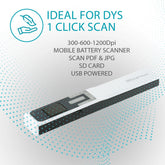
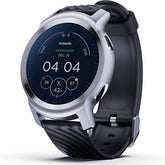
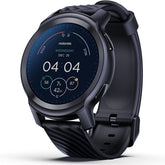



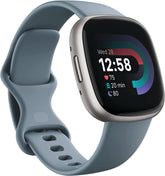


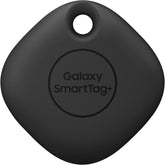
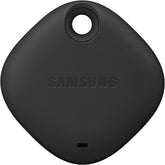
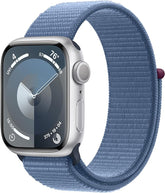

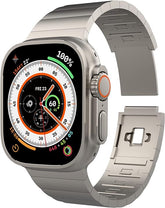
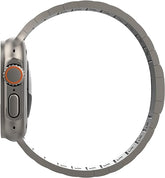
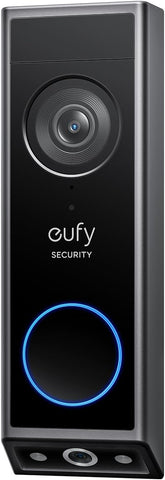

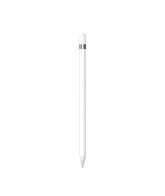

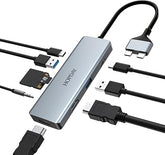

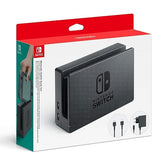
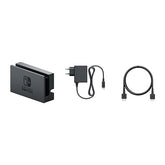
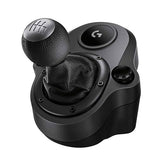
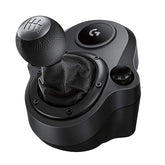




![["B0B1L87TMY"]](http://smarttechshopping.com/cdn/shop/products/7110BNil-dL._AC_SL1500_165x.jpg?v=1695449139)
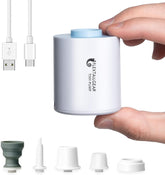
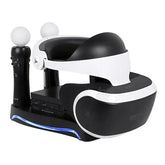





Leave a comment
Please note, comments need to be approved before they are published.